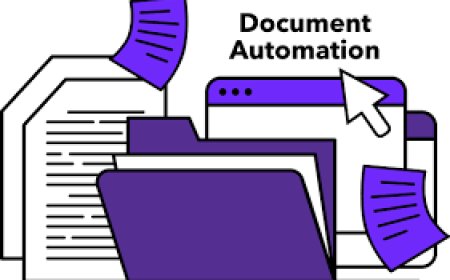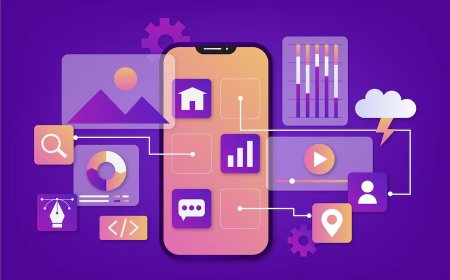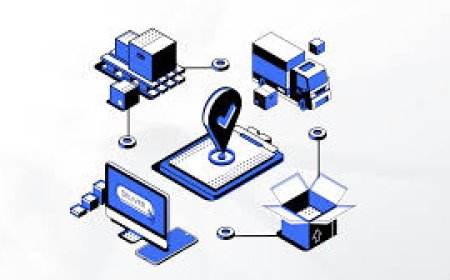Advantage and Disadvantage of Advanced Technology Services

Advanced technology services have become essential for both individuals and organizations in today's rapidly evolving digital environment. These services, which range from automation and cybersecurity to cloud computing and artificial intelligence, offer increased productivity, wiser choices, and quicker expansion. Although the advantages are obvious, there are drawbacks as well.
So, should you use advanced technology services to the fullest? Or take it slow?
Let's examine the practical benefits and drawbacks in plain, human language so you can make the best choice for your requirements, whether they be professional or personal.
Advantages of Advanced Technology Services
1. Increased Efficiency and Productivity
The fact that everything operates significantly more quickly and smoothly is among the most obvious advantages. Cloud services provide real-time team collaboration, automation tools automate tedious operations, and data analytics yield immediate insights that previously required days.
Why it matters:
You save time, reduce human error, and your team can focus on high-value work instead of mundane tasks.
2. Scalability Made Simple
As your business grows, technology can grow with you. Need more storage? Add it to the cloud. Hiring a global team? Remote tools make it seamless. Advanced services are built to scale.
Why it matters:
You dont have to overhaul your systems every time your business levels up.
3. Better Customer Experience
AI chatbots, personalized marketing, mobile appsthese technologies allow you to understand and serve your customers better, often before they even ask for help.
Why it matters:
In todays competitive landscape, customer experience is a major differentiator. Happy customers = loyal customers.
4. Cost Savings Over Time
Yes, there might be an upfront investment, but automating tasks, reducing downtime, and using cloud infrastructure can save money in the long run.
Why it matters:
Instead of maintaining bulky in-house systems or hiring extra staff, you can optimize with smart, cost-efficient tools.
5. Stronger Data and Security Practices
Modern digital services include built-in security protocolsfirewalls, encryption, and multi-factor authenticationto assist in protecting sensitive data in light of the increasing frequency of data breaches.
Why it matters:
Keeping your business and customer data secure isnt optionalits critical for trust and compliance.
Disadvantages of Advanced Technology Services
1. High Initial Costs or Subscription Fees
Even if technology saves money over time, it can be costly to get started. Small enterprises or individuals might not be able to afford premium software licenses, setup fees, or subscriptions.
Why it matters:
It can feel risky to make a big investment without knowing the full return on investment.
2. Over-Reliance on Technology
When everything depends on digital tools, even a small glitchlike a server outage or internet failurecan bring operations to a halt.
Why it matters:
If your team isnt trained to work through downtime or adapt to sudden tech failures, productivity and trust can take a hit.
3. Learning Curve and Training Needs
New tech is excitingbut not always easy. You or your team might need training, time, and patience to fully adopt and understand how to use new systems.
Why it matters:
Poor implementation or lack of training can lead to frustration, errors, or reduced performance.
4. Privacy and Data Concerns
Although security has advantages, there are risks as well, particularly if you're using third-party services that gather and keep client data. Legal issues or harm to one's reputation may result from poor management or leaks.
Why it matters:
Understanding where your data goes and who can access it is essential.
5. Job Displacement and Human Impact
Automation and AI can sometimes replace jobs that were once done by people. While it can increase efficiency, it can also reduce opportunities for certain skill sets.
Why it matters:
Theres a human side to every technology decision. Its important to plan how your team will evolve, not just the tools theyll use.
Finding the Right Balance
Advanced technology services are powerfulbut theyre not magic. The key is balance.
-
Use automation to free up human creativity, not replace it.
-
Lean on analytics to guide decisionsbut dont ignore gut instinct or experience.
-
Embrace cloud toolsbut have a backup plan.
Technology should support your goals, not overwhelm them.
Questions to Ask Before Adopting Advanced Tech
To make a smart choice, ask yourself:
-
What specific problem am I trying to solve with this technology?
-
Will my team be able to use it comfortably and efficiently?
-
How does this service align with my long-term goals?
-
Whats the total costincluding training and maintenance?
-
Who manages the security and privacy of the data?
The more intentional you are, the more likely youll reap the rewards.
Final Thoughts: Is It Worth It?
Services using advanced technologies are no longer nice-to-have. To many, they are indispensable. However, that doesn't mean you have to go right in without a strategy.
Begin modestly. Select tools that address actual issues. Engage your group. Above all, remember the human aspect of the situation.
Because ultimately, people should benefit from technology, not the other way around.
In summary:
Though they also need careful planning, training, and consideration of the human impact, advanced technology services can increase your productivity, scale your company, and enhance customer experiences. Before you dive in, consider the benefits and drawbacks. The best IT strategy is the one that suits you best.








&srotate=0)



























